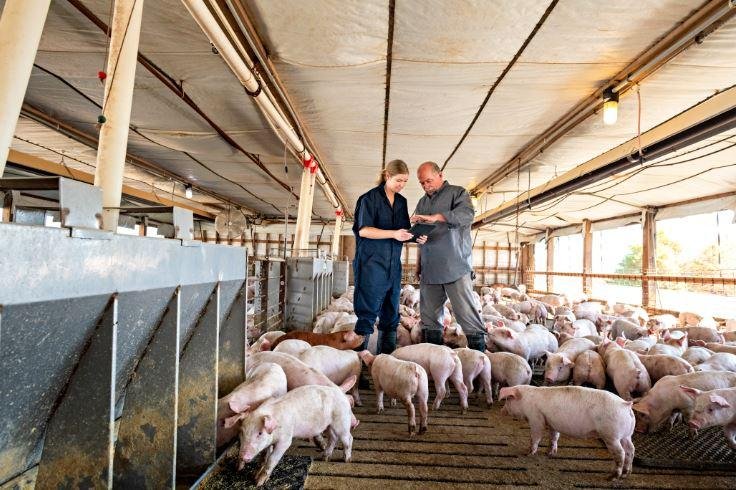The pork industry navigates choppy waters as recent tariff adjustments create unforeseen challenges for producers across America. President Trump’s announcement of reciprocal tariffs has sent shock waves through agricultural markets, with immediate consequences materializing in the commodities sphere. From Wednesday afternoon to Friday’s closing bell, June Lean Hogs experienced a swift decline of $4.97. This financial tremor illustrates just the beginning of what promises to be a prolonged period of market volatility.
Producers find themselves particularly vulnerable to these trade maneuvers. Jackie Ponder, recently elected to the National Pork Producers Council board, articulates the industry’s apprehension succinctly: “This is something that the pork industry has been on pins and needles about because trade is such a huge part of our economic forecasting”. The metaphorical pins don’t just prick; they potentially puncture the stability that operations depend upon for sustainable planning.
Global Implications and Market Disruptions
China’s retaliatory measures have escalated tensions to unprecedented heights. An overwhelming 172% tariff on U.S. pork exports to China effectively barricades American producers from what was once the third largest export destination for U.S. pork. Such prohibitive barriers transform competitive landscapes overnight. American producers watch helplessly as international competitors occupy territories where U.S. pork once flourished abundantly.
The ripple effects extend beyond obvious boundaries. Market observers in the United Kingdom note their relatively fortunate position, facing only the baseline 10% rate. Nevertheless, Alistair Driver, editor at Pig World, suggests the broader disruption of global pork trade flows might inflict deeper wounds than direct tariff impacts. Trade patterns, once established over decades, unravel with remarkable speed when political decisions intervene abruptly.
The situation contains peculiar silver linings amid overwhelming clouds. Pork producers expressed measured relief when learning that Canada and Mexico—protected under USMCA provisions—maintain zero-tariff status for pork products. Mexico, as the premier destination for American pork, represents a crucial stronghold that producers desperately need to preserve. Yet this comfort exists alongside paradoxical uncertainty about how long such arrangements will persist in an increasingly unpredictable trade environment.
Financial Reverberations and Operational Adaptations
Financial forecasts grow increasingly complex amid tariff uncertainties. Seaboard reported challenges in their fiscal Q1 2025 operating income, citing “lower margins of pork products and market hogs sold”. These corporate statements translate to real-world consequences for producers who must shoulder additional burdens while maintaining operations.
The inherent value of export markets cannot be overstated for the industry’s health. Approximately $66 of every pig sold directly connects to robust export channels. When these channels constrict due to political maneuvering, the entire value chain suffers disproportionate damage. Producers must now reconfigure their operational strategies against a backdrop where essential revenue streams suddenly appear precarious.
Canadian market analysts present a sobering perspective on potential outcomes. Jim Eadie of Swineweb.com warns that retaliatory tariffs on U.S. pork might actually impact Canadian hog prices more severely than the tariffs themselves. Market oversupply resulting from reduced exports could cascade through North American pricing structures, dragging Canadian prices downward alongside their American counterparts. The interconnectedness of continental markets means no producer exists in isolation from policy decisions.
Industry representatives emphasize the broader economic contributions at stake. More than 25% of U.S. pork production finds its way to international markets, supporting over 140,000 domestic jobs. These positions now hang in the balance while trade negotiations continue their uncertain trajectory. Producers resist panic but acknowledge the gravity of potential outcomes if solutions remain elusive.
Perhaps most telling is the industry’s stoic response in the face of overwhelming complexity. While futures contracts tumble and market access constricts, producers maintain focused determination. They weather this storm like many before, recognizing that geopolitical considerations eventually give way to economic realities. Until then, they’ll continue bringing home the bacon—albeit with thinner profit margins and heavier administrative burdens than anyone would prefer.




